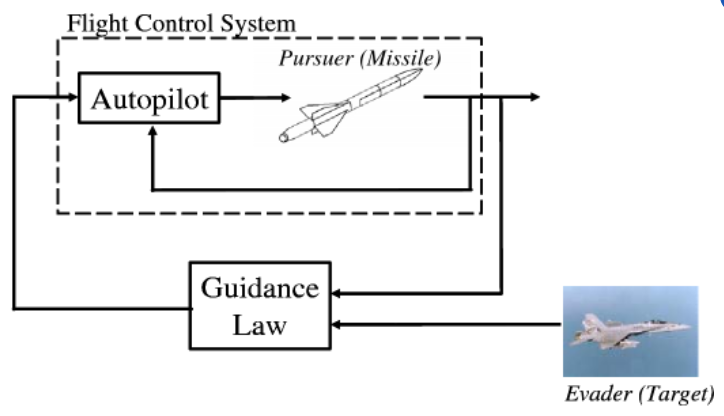Definition
A guided missile engagement is a highly dynamic process. The conditions that determine how close the missile comes to the target are continuously changing, sometimes at a very high rate. A guidance sensor measures one or more parameters of the path of the missile relative to the target. A logical process is needed to determine the required flight path corrections based on the sensor measurements.
This logical process is called a guidance law. The objective of a guidance law is to cause the missile to come as close as possible to the target. Guidance laws usually can be expressed in mathematical terms and are implemented through a combination of electrical circuits and mechanical control functions.
The two basic criteria on which guidance laws are based are that the guidance must (1) be effective under anticipated conditions of use and (2) be able to be implemented using the particular sensor configuration selected. A number of different schemes and their many variations have been used for missile guidance, chief among which are intercept point prediction, pursuit, beam-rider, proportional navigation, and methods based on modem control theory.



